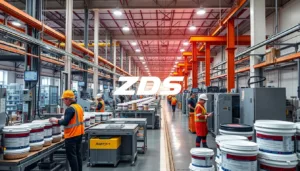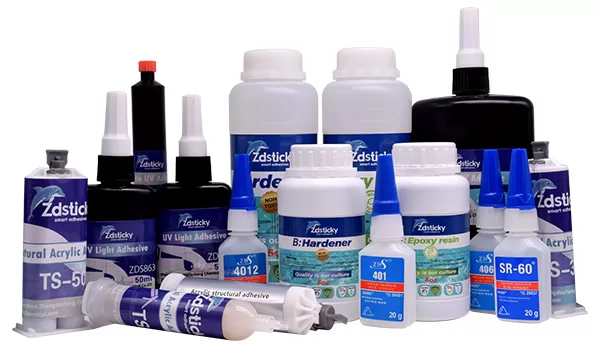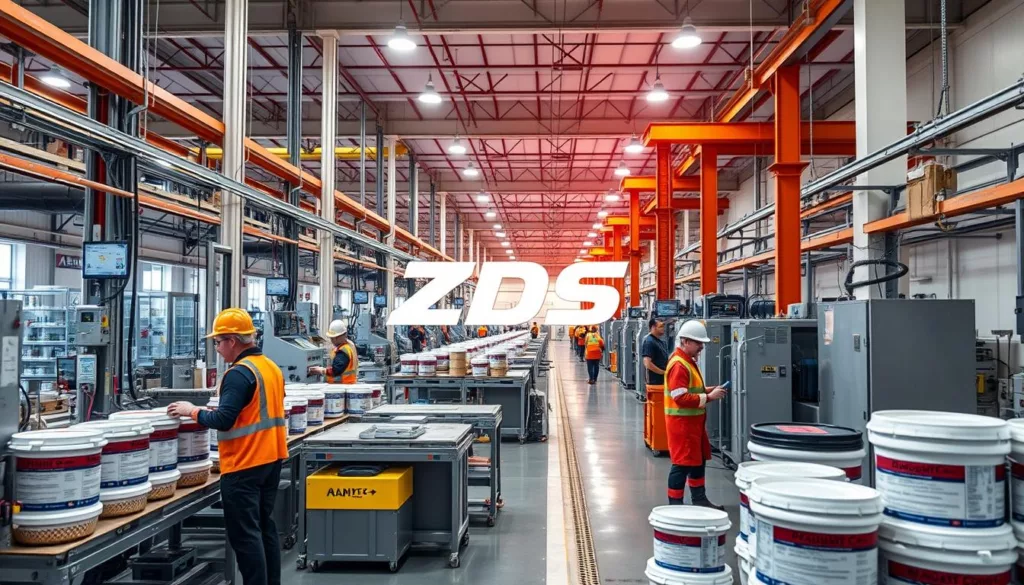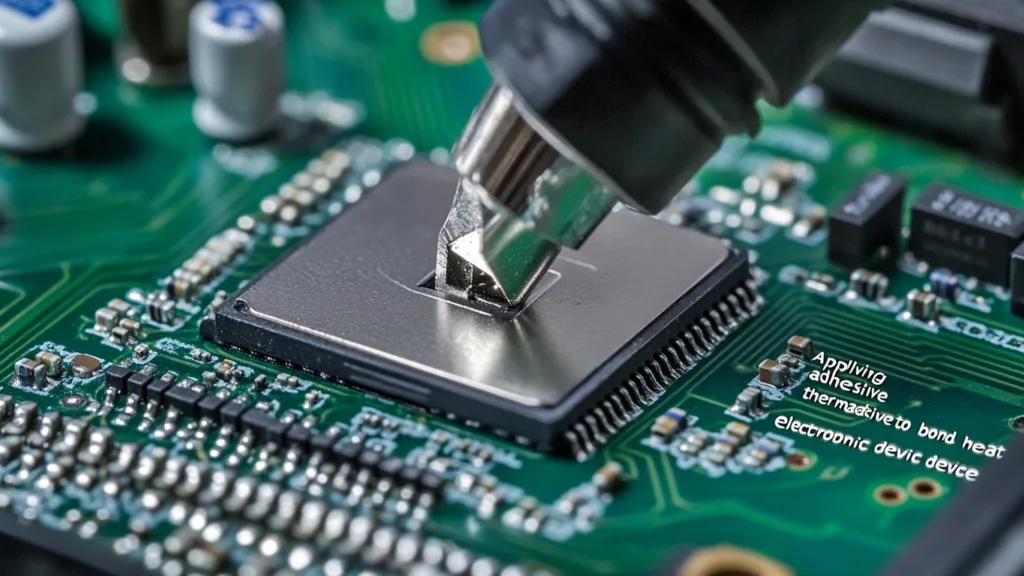In floor installation, choosing the right adhesive on Floor is key for a long-lasting finish. The type of adhesive matters a lot, especially with different floor types and weather conditions. Whether you’re doing it yourself or are a pro, knowing how to use adhesive can make your floors better.
A strong floor starts with the right adhesive choice. For ZDS™ vinyl flooring, using the right adhesive prevents shrinking and swelling outdoors. An acrylic-based vinyl adhesive works best in harsh weather, making sure your floors stick.
When installing ZDS™ on plywood for various uses, ZDS™ Marine & Outdoor Adhesive is needed. This acrylic adhesive is great for wood, aluminum, and concrete. On concrete floors, pressure-sensitive adhesives (PSA) are best for a strong hold.
Before starting the installation, make sure the subfloor is clean, dry, and smooth. This ensures the adhesive sticks well for a great-looking floor. Learning these application techniques helps your floors last longer.
Key Takeaways
- Proper adhesive application is crucial for a durable and aesthetically pleasing floor.
- Acrylic-based vinyl adhesive is recommended for ZDS™ to withstand extreme weather.
- ZDS™ Marine & Outdoor Adhesive is ideal for plywood installations.
- Use pressure-sensitive adhesives for concrete surfaces.
- Ensure the subfloor is clean, dry, and level before beginning the installation.
The Importance of Using the Right Floor Adhesive
Choosing the best floor adhesive is key in any flooring project. It affects how long the floor lasts, how it looks, and how it performs.
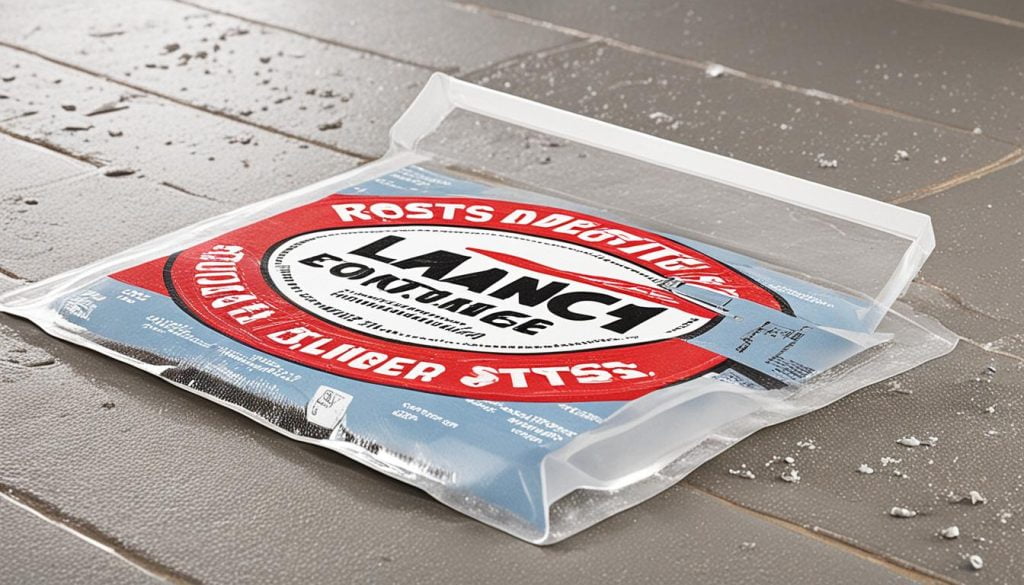
Choosing the Best Floor Adhesive
Picking the right floor adhesive requires attention to several important factors. The adhesive must work well with both the floor material and what’s below it. You need to think about how quickly it dries, its resistance to moisture, and how strongly it holds things together. For wet areas, choose an adhesive that handles moisture well. In places with lots of foot traffic, go for one that’s known for its strength.
Common Mistakes to Avoid
There are common errors to dodge when selecting and applying floor adhesives. One big mistake is not matching the adhesive to the floor type, leading to weak bonds. Another mistake is skipping the directions on how to use it properly, including the drying times. Remember, the best floor adhesive can fail if it’s not used right or in the wrong conditions.
Types of Floor Adhesives and Their Applications
Choosing the right floor adhesive for tiles or any other flooring type is vital. Each adhesive has unique properties. These properties make them fit for specific jobs, ensuring floors last long and perform well.
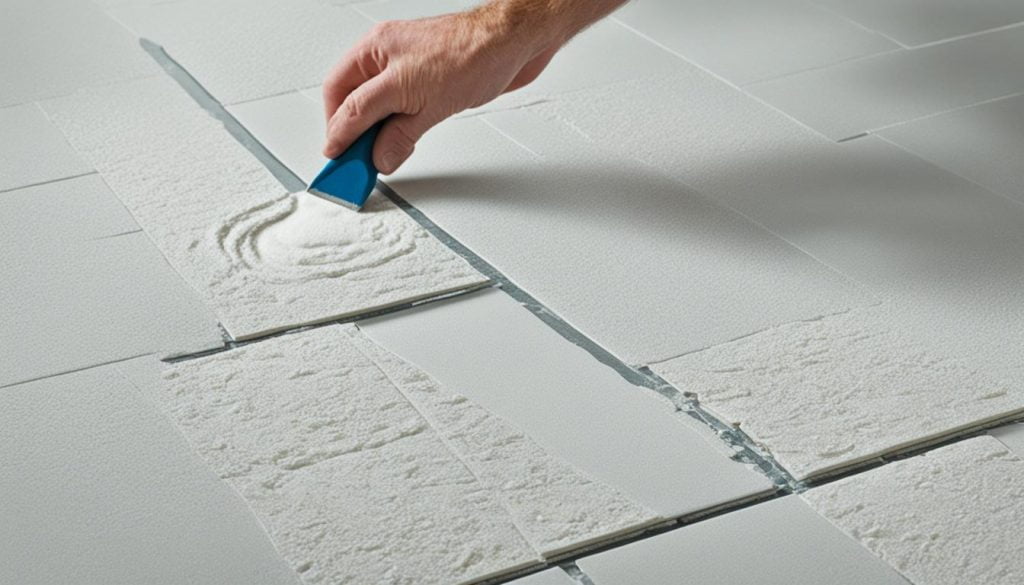
Epoxy Adhesives
Epoxy adhesives are perfect for tough settings. They are strong and resist chemicals. Epoxies bond well, making them great for areas that see a lot of action, like with recycled rubber and stainless steel.
They’re also a top pick for ceramic tiles. They bond tightly and resist stains and chemicals well.
Polyurethane Adhesives
Polyurethane adhesives stand out for their flexibility and strength. They’re mainly used for timber floors. For flooring like bamboo or wide plank engineered types, they work best.
These adhesives also fight off moisture. This makes them perfect for areas that are often wet or humid.
Acrylic Adhesives
Acrylic adhesives are good at handling the elements. They are a go-to for vinyl floors. Easy to use and affordable, they’re chosen for many projects.
They bond well to different surfaces. Acrylics are also easy to clean up, which is a big plus.
- Epoxies are best for high-strength and chemically resistant applications, including tiles.
- Polyurethanes excel in flexibility and moisture resistance for wood flooring.
- Acrylics provide cost-effective solutions with good environmental resistance for vinyl flooring.
| Adhesive Type | Primary Usage | Key Properties |
|---|---|---|
| Epoxy Adhesives | Industrial Environments, Ceramic Tiles | High Strength, Chemical Resistance |
| Polyurethane Adhesives | Wood Floors, Bamboo Flooring | Flexibility, Moisture Resistance |
| Acrylic Adhesives | Vinyl Flooring, Carpet | Cost-Effective, Environmental Resistance |
Picking the right adhesive—like epoxy adhesives, polyurethane adhesives, or acrylic adhesives—is key. Each kind is made for different flooring needs. They offer unique benefits for various materials and places.
How to Apply Floor Adhesive Correctly
Applying floor adhesive the right way is key to a great floor installation. Let’s explore how to improve our methods of applying adhesive.
First, prepare the surface preparation carefully. Clean the area to get rid of dust, dirt, or any moisture. Sometimes, we might need special primers to stick better.
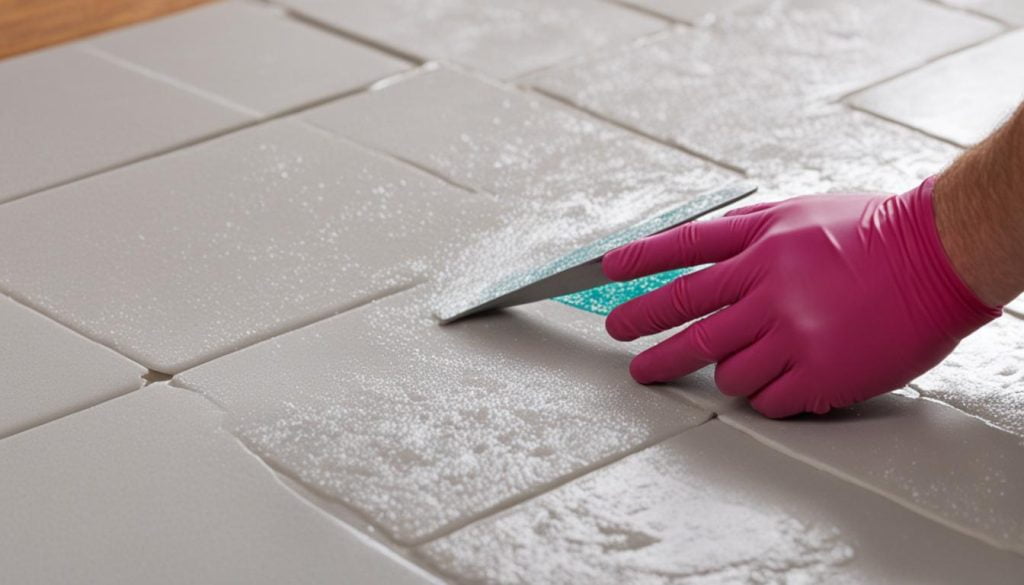
Now, let’s talk about how to spread the adhesive. Use the correct tool, like a notched trowel, for an even layer. The size of the trowel’s notches should match our adhesive needs for the best coverage.
After spreading the adhesive, we need to place the flooring down carefully. Make sure there are no bubbles or empty spaces. A roller can help press it down smoothly and firmly.
The last step is to wait for the adhesive to set according to the maker’s guidelines. Hurrying through this step could weaken the bond.
Having the best tools, like quality trowels and rollers, makes the application smoother. It’s a good idea to invest in these tools for the best results.
- Thoroughly clean the substrate.
- Apply primer if necessary.
- Select the appropriate notched trowel.
- Spread the adhesive evenly.
- Press the flooring material firmly.
- Respect curing times for optimal results.
By sticking to these steps and tips, we’ll get great at applying floor adhesive. This ensures our floors look amazing and last a long time.
Recommended Floor Adhesives for Different Surfaces
Choosing the right adhesive is key for long-lasting, good-looking floors. Different types of flooring like wood, tile, and vinyl need specific adhesives. Let’s look at the best options for these surfaces.
Wood Flooring
Wood floors need an adhesive that is flexible yet strong. Polyurethane-based adhesives are great because they stretch with the wood. Brands like Bostik and MAPEI are known for their effective wood floor adhesives.
Tile Flooring
Cement-based adhesives are best for tile floors. They provide the strength and durability to keep tiles fixed. LATICRETE and Custom Building Products offer reliable adhesives for tiling, able to withstand moisture and temperature changes.
Vinyl Flooring
Vinyl requires a special adhesive for a lasting bond. Acrylic adhesives work well due to their resistance to factors like moisture. Brands such as Roberts and Armstrong offer adhesives that are perfect for vinyl, ensuring durability and easy use.
| Type of Flooring | Recommended Floor Adhesive | Top Brands |
|---|---|---|
| Wood Flooring | Polyurethane-Based | Bostik, MAPEI |
| Tile Flooring | Cement-Based | LATICRETE, Custom Building Products |
| Vinyl Flooring | Acrylic-Based | Roberts, Armstrong |
Best Practices in Floor Tile Adhesive Usage
When working with floor tile adhesive, following best practices is key. Selecting the right trowel is crucial. The correct notched trowel spreads adhesive evenly, preventing tiles from lifting.
Let’s explore some top best practices in adhesive application. These ensure your project is both effective and long-lasting.
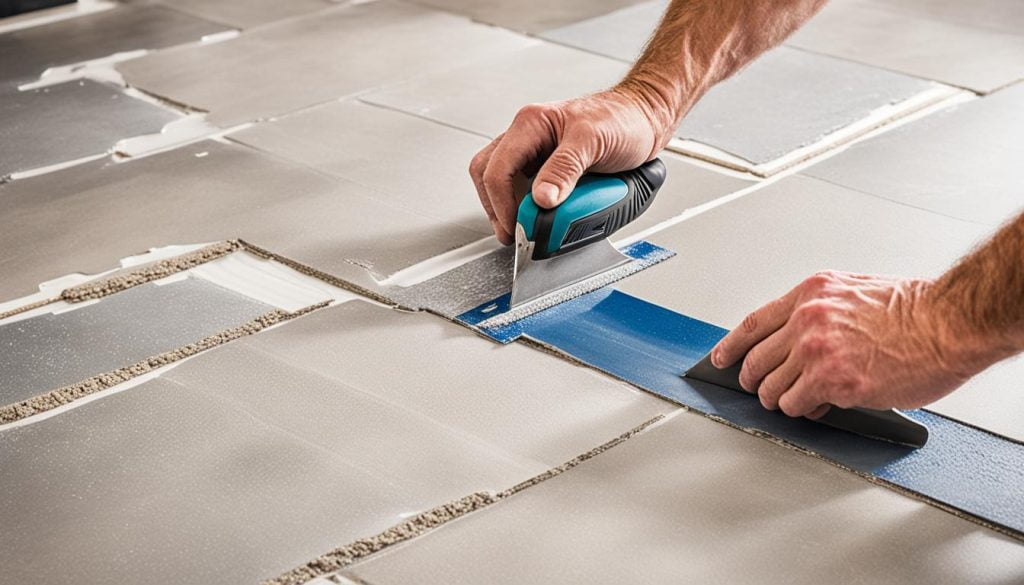
Start by cleaning the surface to remove dust and debris. A clean base helps the floor tile adhesive bond better. Then, mix the adhesive to the right consistency. It should not be too thick or too thin.
Applying too much adhesive can lead to problems. It can cause unevenness and adhesive oozing from under tiles. Also, make sure the adhesive doesn’t dry too quickly. Proper timing and controlling the environment are critical.
| Steps | Best Practices |
|---|---|
| Surface Preparation | Clean and level the surface to enhance bonding. |
| Trowel Selection | Use the appropriate notched trowel for even application. |
| Adhesive Consistency | Mix adhesive to the correct thickness for optimal bonding. |
| Applying Adhesive | Smoothly spread an even layer to avoid lumps or voids. |
| Drying Time | Adhere to recommended drying times to prevent tile shifting. |
| Environmental Control | Maintain the correct temperature and humidity during application. |
By sticking to these best practices in adhesive application, stronger, more durable floors are guaranteed. Proper preparation and application of floor tile adhesive results in lasting beauty.
Top Floor Adhesives for Heavy-Duty Applications
Choosing the right adhesive for heavy-duty tasks is key. This is especially true in industrial and commercial areas. Floors in these places face heavy traffic and loads, plus changes in the environment.
Industrial Settings
Industrial places need strong adhesives. They must handle lots of use, chemicals, and tough conditions. The Gorilla Heavy Duty Construction Adhesive is a top choice for these challenges. It meets important standards and holds various materials securely.
It’s versatile, bonding many materials like plastic, metal, and wood. Plus, it’s eco-friendly with very low VOCs.
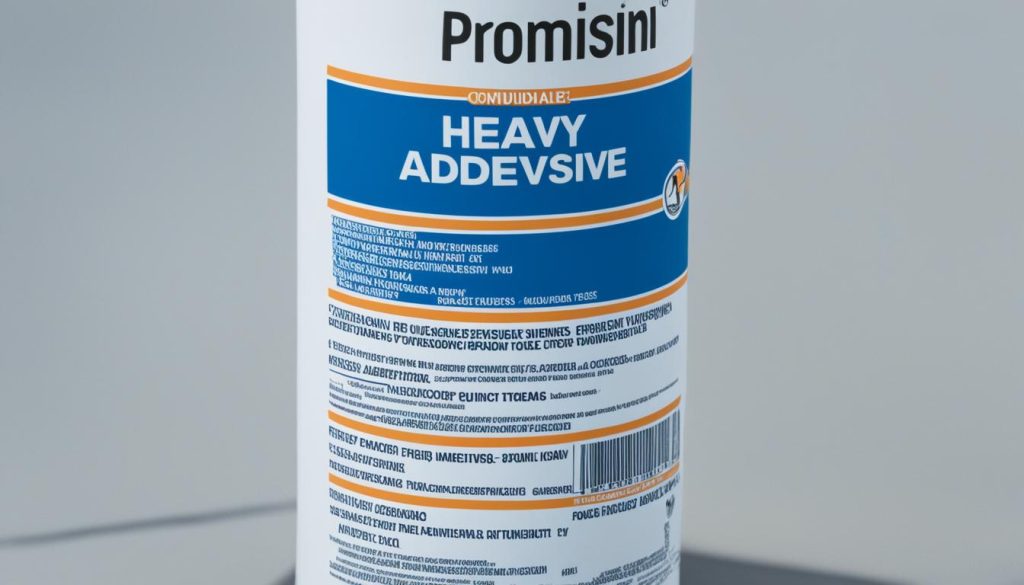
Commercial Buildings
Adhesives in commercial areas face different challenges. These include lots of foot traffic and the need for regular cleaning. Gorilla Heavy Duty Construction Adhesive holds up well because it doesn’t contain water or solvents. That means it won’t shrink or crack.
It works well on various materials, making it great for many commercial floors. Remember, this adhesive isn’t safe for surfaces in contact with food.
| Feature | Gorilla Heavy Duty Construction Adhesive |
|---|---|
| VOC Compliance | Less than 2% VOC content |
| Standards Exceeded | ASTM C557, ASTM D3498, AFG-01 |
| Water/Solvent-Free | Yes |
| Versatility | High |
| Non-Food Safe | Not for direct or indirect food contact |
Benefits of Using Premium Floor Adhesive
Using a premium floor adhesive is more than just laying down flooring. It brings great benefits, improving your floor’s quality and function. It’s a smart move for anyone wanting top-notch flooring.
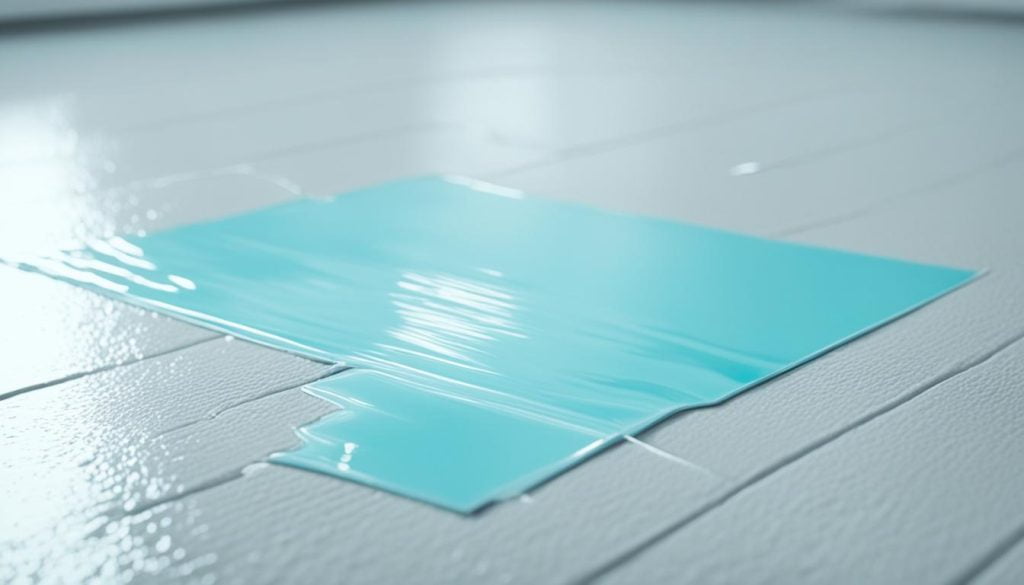
Longevity and Durability
Longevity and durability are big wins with premium floor adhesive. It holds your flooring tight, making it last longer. You won’t have to fix or replace your floor often. This saves you money, time, and hassle.
Aesthetic Benefits
Premium floor adhesive also makes your floor look better. It helps put everything in place perfectly, avoiding bumps or gaps. Your floor will look smooth and flawless, boosting your space’s look. It’s like having a pro do it, but it’s all you.
Understanding the Strength of Different Adhesive Types
When working with floors, it’s key to know the strength of different adhesive types. Each one has its own level of tensile, shear, and peel strength. These determine how well it works with varied flooring materials.
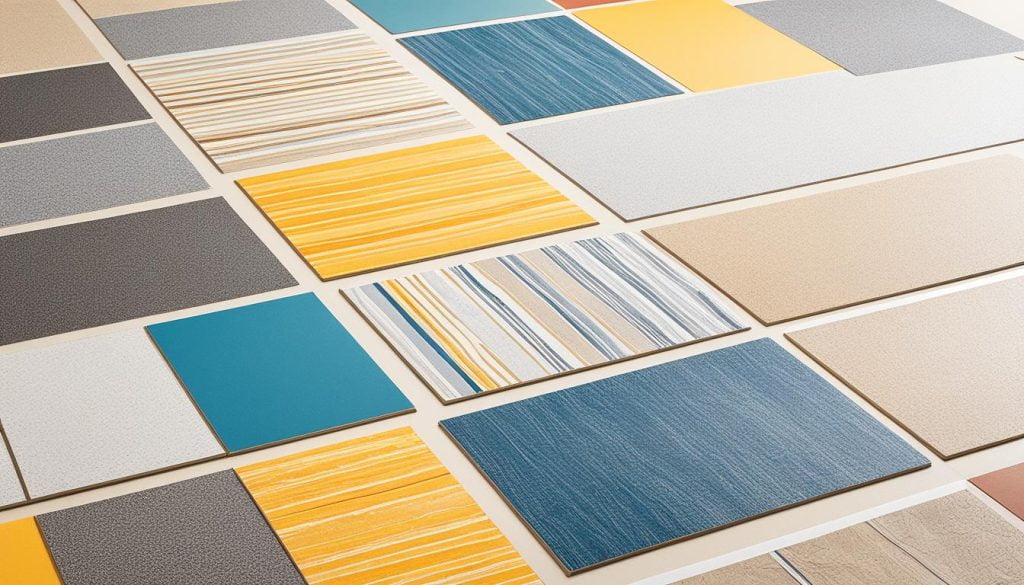
| Adhesive Type | Tensile Strength | Shear Strength | Peel Strength |
|---|---|---|---|
| Epoxy | High | Very High | Medium |
| Polyurethane | Medium | High | High |
| Acrylic | High | Medium | High |
Knowing these features helps us pick the right adhesive for our floors. For example, epoxy is best when you need to fight chemicals due to its top adhesive strength. On the other hand, polyurethane is great for wood floors because it’s flexible.
“In flooring projects, grasping the nuances of adhesive strength ensures a durable and lasting installation.”
Choosing wisely depends on what your floor needs. This choice plays a big part in how long your floor will last and how good it looks.
ZDS™ Recommended Floor Adhesives
The right floor adhesive is key to a successful installation. Our research and customer feedback have led us to a top list from the ZDS™ range.
Our Top Picks
We’ve picked the best ZDS™ adhesives for different floors and needs. Each choice is based on its strength, long-lasting bond, and ease of use.
- ZDS™ ProBond: Perfect for hardwood due to its excellent bonding and resistance to moisture.
- ZDS™ TileMate: Great for ceramic and porcelain tiles. It holds firmly and is easy to apply.
- ZDS™ VinylSecure: Specially for vinyl floors, it ensures strong adhesion and flexibility.
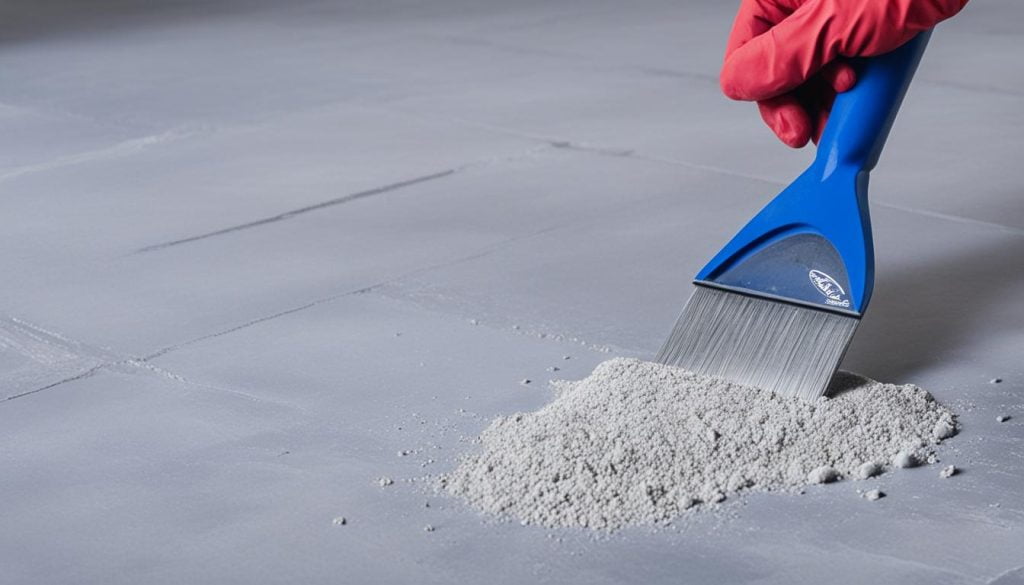
Customer Reviews and Testimonials
Our customers love ZDS™ adhesives. Here’s what they say:
“ZDS™ ProBond was used on my living room floor. It’s strong and durable.” – Sarah L.
“Tile installation was easy with ZDS™ TileMate. The tiles are securely in place.” – Michael R.
“ZDS™ VinylSecure was perfect for my vinyl planks. My floors look great.” – Jennifer K.
Using ZDS™ adhesives can make your flooring better and last longer. Our customers’ happy stories prove the product’s worth and effectiveness.
Common Issues with Floor Adhesive and How to Fix Them
Even with careful planning, we often hit snags like issues with floor adhesive during installation. These bumps in the road include weak sticking, bubbling, and moisture troubles. Catching and solving these issues quickly saves time and headaches. Here, we’ll look at these problems and how to fix them.
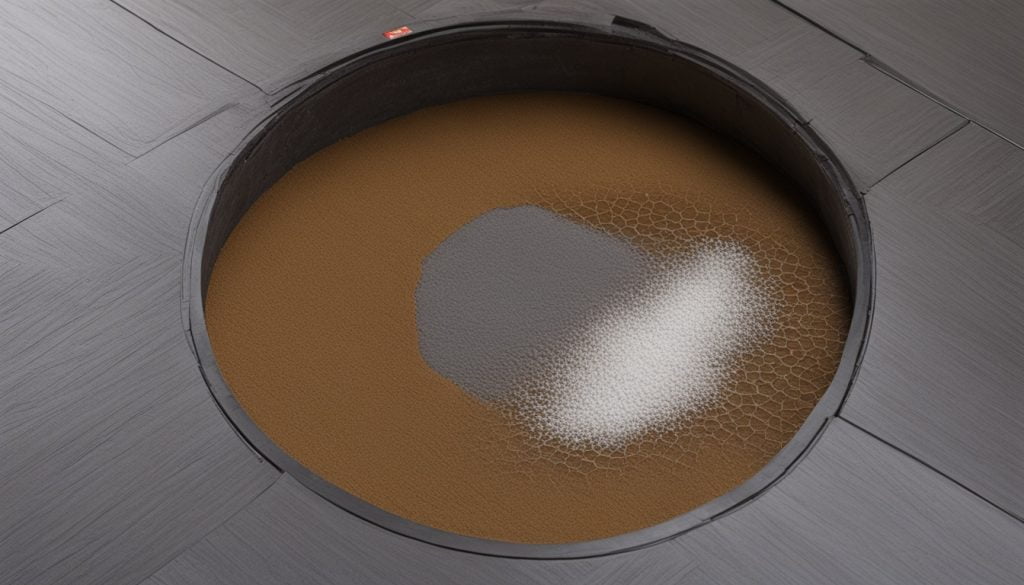
Poor Adhesion: A big problem is the adhesive not sticking well. This can happen if the surface isn’t ready or the wrong glue is used. To fix it, make sure the subfloor is clean, dry, and smooth. It’s also key to use the right adhesive for the flooring type.
Bubbling: Bubbles form when air gets trapped under the flooring. This can come from not spreading the adhesive evenly or it getting wet too soon. To fix bubbles, double-check that the glue is spread out right. Let it dry well. Using a roller helps push out trapped air.
Moisture Problems: Too much moisture ruins the glue’s ability to stick, causing floors to lift or warp. For moisture issues, pick adhesives that can handle moisture well. Consider a moisture barrier, too. Testing the subfloor for moisture before starting your work is a wise move.
Check out this comparison table for the different issues with floor adhesive:
| Problem | Cause | Solution |
|---|---|---|
| Poor Adhesion | Dirty or Wet Subfloor | Clean and Dry Subfloor, Use Appropriate Adhesive |
| Bubbling | Uneven Adhesive Application | Ensure Even Application, Use a Roller |
| Moisture Problems | High Moisture Content | Use Moisture-Resistant Adhesive, Install Moisture Barrier |
By tackling these common issues with floor adhesive head-on, our flooring projects will last longer and look better. Remember, success lies in preparing well and choosing the right products to fix floor adhesive problems the right way.
Advanced Techniques for Applying Adhesive for Flooring
Mastering advanced adhesive techniques can make a big difference in our flooring projects. We’ll explore methods like back-buttering tiles and using leveling compounds. These approaches help with tough installation challenges.
Back-buttering tiles is a key advanced adhesive technique. It creates a strong bond and reduces empty spaces under the tiles. We do this by spreading a thin adhesive layer on the tile back. This leads to a better adhesive spread and stronger, more reliable installs. It’s especially good for big tiles or uneven surfaces.
Using leveling compounds is also important for advanced adhesive techniques. These compounds make a smooth, level surface. This is crucial for the best adhesive performance. Leveling the ground makes installing easier. It also improves the floor’s durability and looks.
| Technique | Benefits | Considerations |
|---|---|---|
| Back-buttering Tiles | Enhanced bond strength, reduced voids | Recommended for large tiles, uneven substrates |
| Leveling Compounds | Smooth, even surface | Essential for optimal performance |
With these advanced adhesive techniques, we’re ready for tougher flooring projects. These skills guarantee excellent results that last. They improve our craftsmanship and give our installations a professional finish.
Conclusion
As we conclude our guide on floor installation, the importance of choosing the right floor adhesive stands out. Every step, from picking the right glue to applying it correctly, is vital. With the right knowledge and tools, anyone can install floors that look great and last long.
We talked about different adhesives and how to use them. For example, epoxy is great for industrial areas, polyurethane is good for wood, and acrylic works well with vinyl. We also shared tips and product recommendations to help you solve any problems that might come up.
Choosing the right adhesive is key to successful floor installation. By using what you’ve learned from this article, your flooring projects can look beautiful and last a long time. Here’s to floors that look good for years to come!
FAQ
What is the importance of using the right adhesive for flooring?
The right adhesive keeps floors strong and long-lasting. Each kind is made for different floor types and situations. This means the right choice improves how the floor is put in and how well it works.
How do I choose the best floor adhesive for my installation?
The best adhesive depends on your floor type, the area’s condition, and moisture levels. Choosing the right one makes sure your floor stays secure and lasts longer.
What are common mistakes to avoid when using floor adhesive?
Common mistakes include not getting the area ready, using the wrong amount of glue, and not waiting long enough for it to set. Always follow the guidelines and prepare the surface well.
What are the different types of floor adhesives available?
You can choose from epoxy, polyurethane, and acrylic adhesives. Epoxies are great for tough settings, polyurethane works well for wood, and acrylic is good for vinyl floors because it can handle different conditions.
How should I apply floor adhesive correctly?
Start by cleaning and drying the area well. Use the right tools to spread the glue evenly. Make sure to let it set as advised for a successful installation.
What floor adhesives are recommended for different surfaces?
Use polyurethane adhesives for wood floors because they’re flexible. Epoxy is best for tile floors due to its strength. For vinyl floors, acrylic adhesives work well because they resist different conditions.
What are best practices for using floor tile adhesive?
Pick the right trowel and press the tiles down well. Avoid using too much glue or not waiting long enough for it to dry. These steps help stop tiles from coming loose.
What are the top floor adhesives for heavy-duty applications?
For tough spots, epoxy is the top choice because it’s very strong and resistant. Polyurethane is good for places with lots of people moving around. These adhesives keep up with heavy use.
What are the benefits of using premium floor adhesive?
High-quality adhesives help floors last longer and look better. Spending more now can stop problems later, keeping your floor in top shape and looking great.
How do I understand the strength of different adhesive types?
Look at the tensile, shear, and peel strength to understand adhesive power. Epoxy usually has the highest strength. The best choice depends on your floor type and the job.
What are some recommended floor adhesives from ZDS™?
ZDS™ offers adhesives that are both strong and durable. Customers often praise them for their reliability and effectiveness. Reviews show they’re trusted options.
What common issues can arise with floor adhesive and how can they be fixed?
Problems like weak hold, bubbling, and moisture can happen if glue isn’t used right. Fix issues by prepping well and using the correct glue. Professional advice can also solve problems effectively.
What are advanced techniques for applying adhesive for flooring?
Advanced methods involve back-buttering tiles and using leveling compounds on uneven areas. These techniques help tackle tough jobs for a sleek finish.



